We’re covering four conifers on this site:
- Pinus contorta, shore pine
- Pseudotsuga menziesii, Douglas-fir
- Thuja plicata, western redcedar
- Tsuga heterophylla, western hemlock
Below are some images to help you distinguish between these species.
Western redcedar has distinctive scale-like leaves, so you won’t get that one mixed up with any of the others.
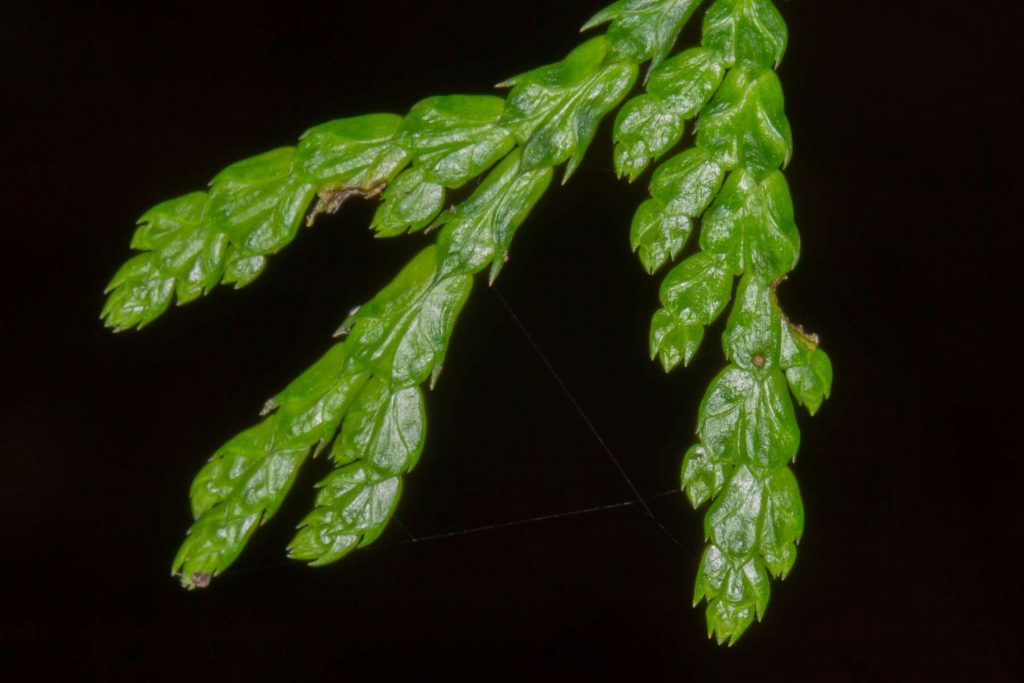
However, shore pine, Douglas-fir and western hemlock all have needle-like leaves and could potentially be mixed up. When studying the images below, note that the length of the needles is different, as well as the overall look of the sprigs.
Shore pine – long needles in pairs, needles are slightly twisted and the sprig has a ‘brushy’ appearance.
Douglas-fir – needles look a bit pointy, are straight, and are mostly of the same length.
Western hemlock – needles are shorter overall and clearly of different lengths, some needles are much shorter than others. The sprig looks quite flat.
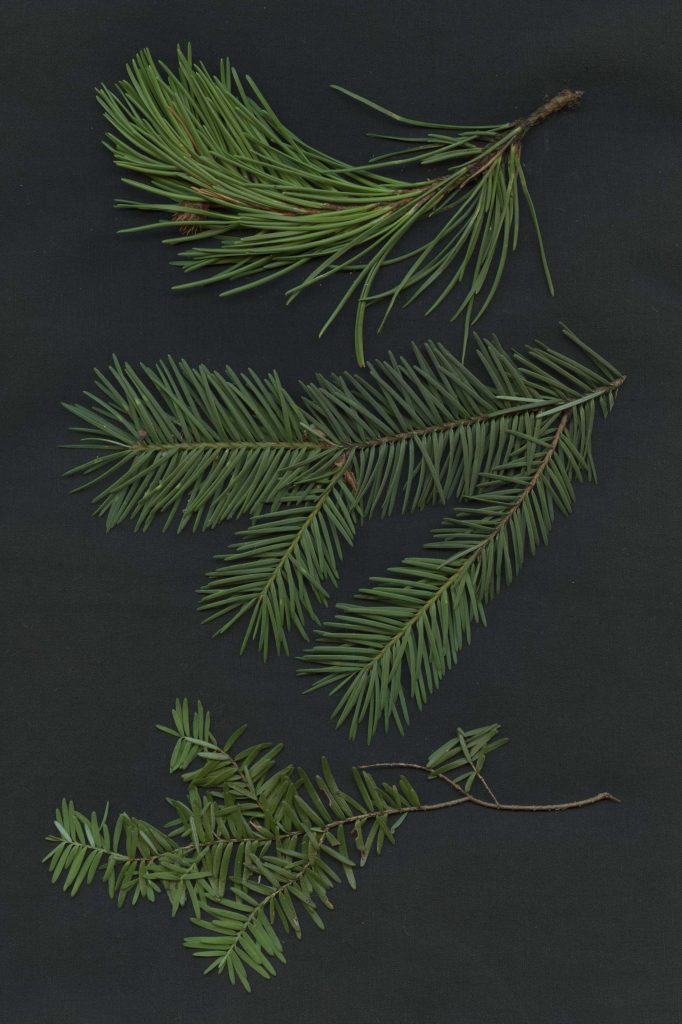
Douglas-fir and western hemlock have asymmetric needles that produce an upper side and underside to the twig. Shore-pine needles don’t have a clear top/underside. In this image, the upper sides of the Douglas-fir and western hemlock sprigs are shown.
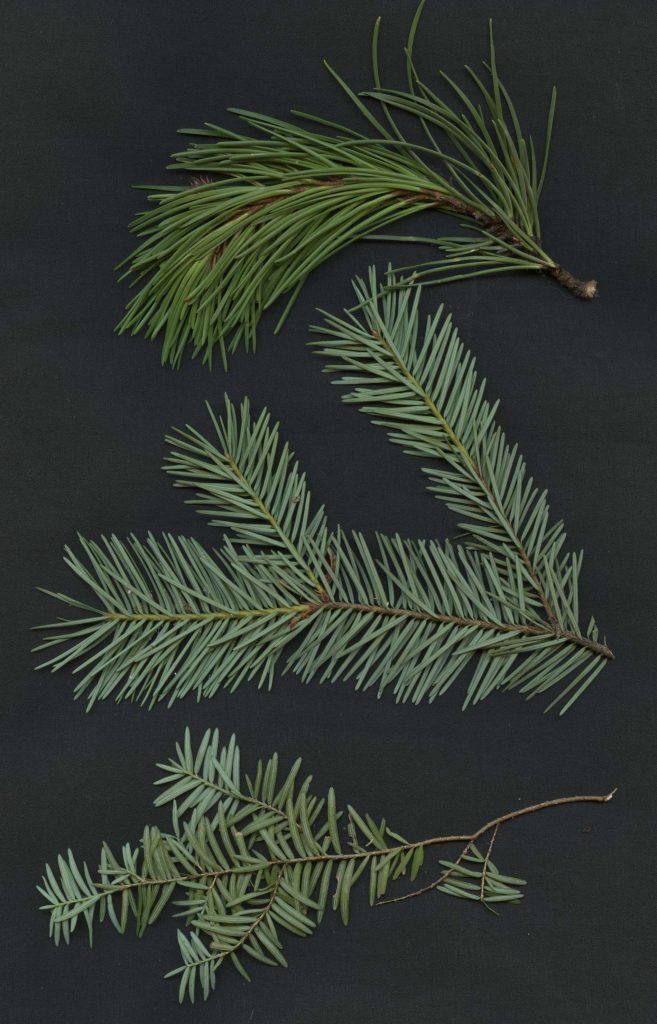
In this image, the undersides of the Douglas-fir and western hemlock sprigs are shown. The white colour on the underside indicates presence of epicuticular waxes that slow down water diffusion from the leaves.
Here are images of a few needles from each species (western redcedar not included):
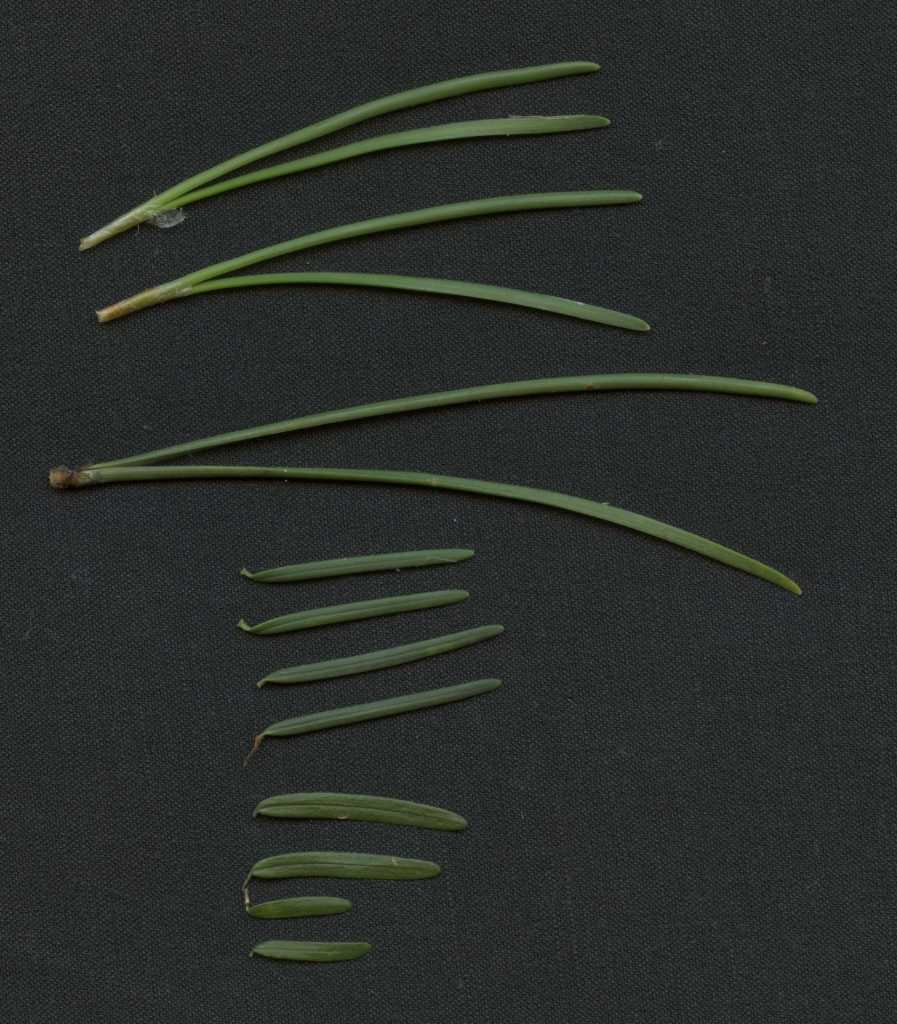
Upper side of Douglas-fir and western hemlock needles. Note that the shore pine needles occur in pairs, are significantly longer, as well as twisted (contorted). Douglas-fir needles are fairly slender, western hemlock needles are flat and wide.
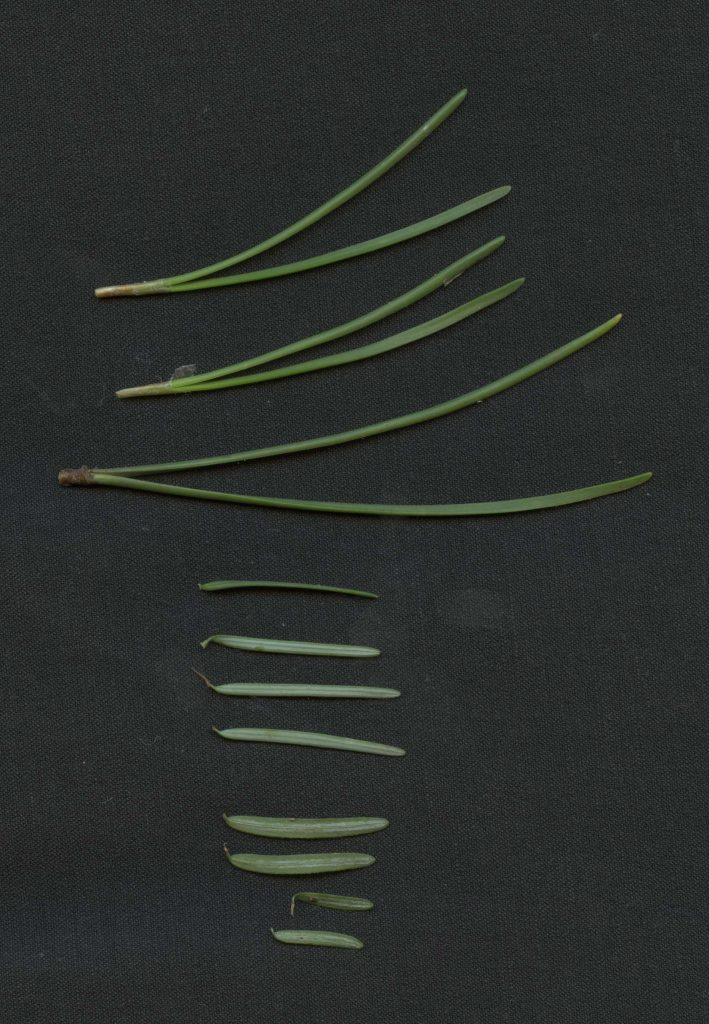
Underside of Douglas-fir and western hemlock needles.
The female cones of the four conifer species are distinct from each other, and if you can find them on or underneath the tree, they are a good distinguishing feature.
Top to bottom: shore-pine, Douglas-fir, western hemlock and western redcedar female cones.
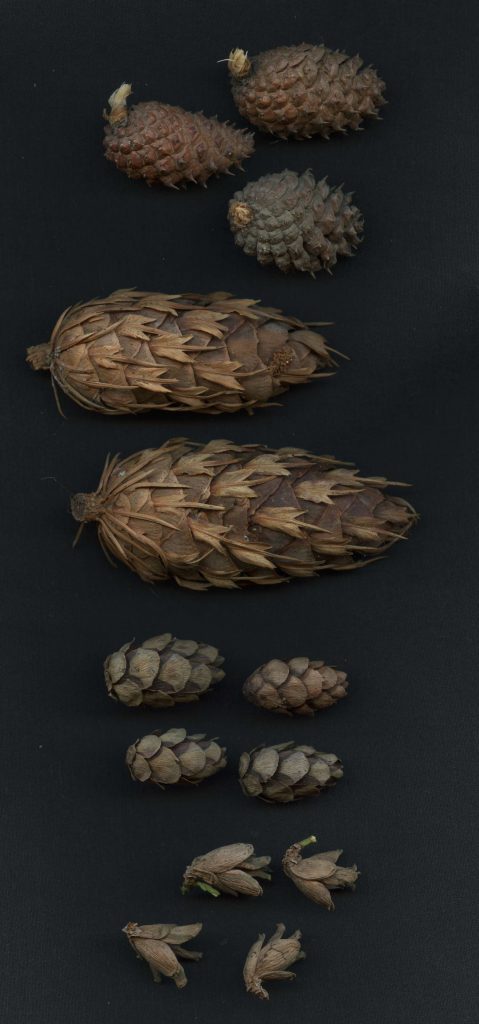
Note the relative sizes and distinctive appearance of the female cones from the four species.